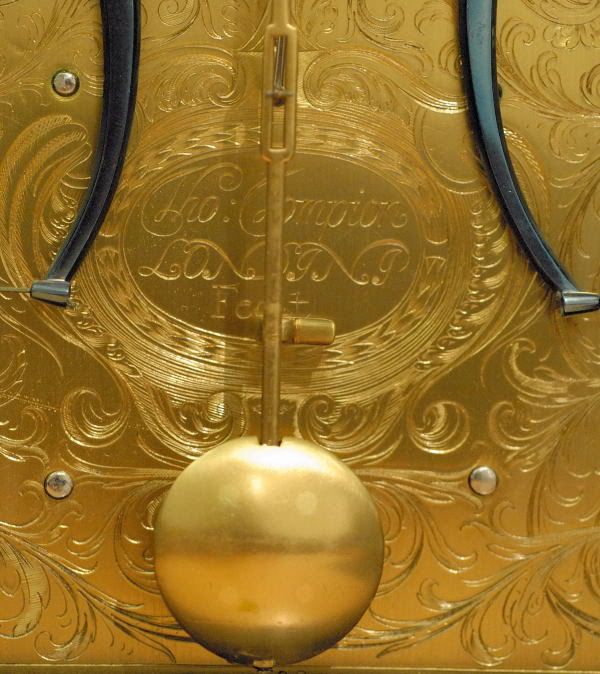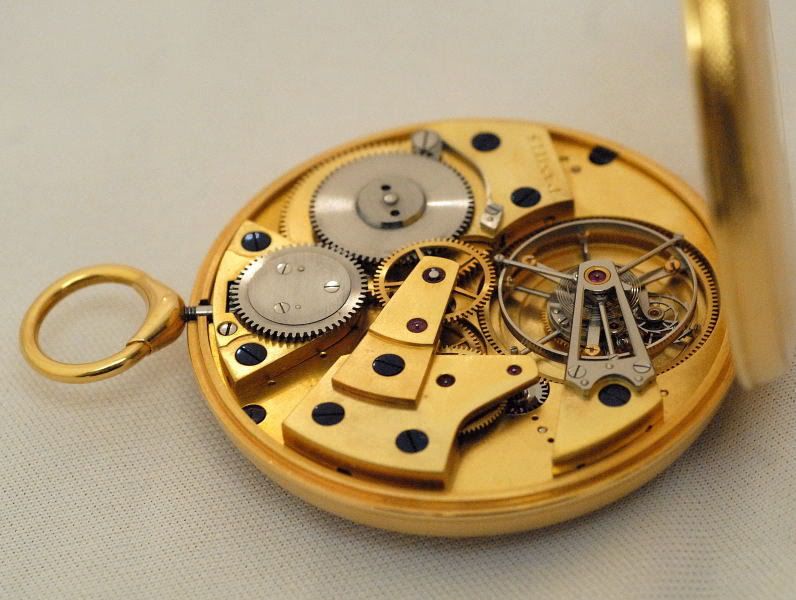
219
3826

The real English Masters
London is a city of continual change. For the latter half of the twentieth century, Fleet Street was thought of as the centre of the English newspaper industry. But turn the clock back 300 years, and the same area was the centre of English watchmaking. About the time Samuel Johnson was declaring “No, Sir, when a man is tired of London, he is tired of life; for there is in London all that life can afford", Thomas Tompion set up shop literally just down the road from the author of “A Dictionary of the English Language”.
If you find yourself wandering along Fleet Street, and look up at number 67 (at the corner with Whitefriars Street) you will see a small blue plaque on the wall declaring where George Graham and Thomas Tompion lived and worked. It is hard to imagine now that London and Paris were once the centres of the watchmaking world. A product of necessity, watch and clock making made the world a navigable place (with high precision) that enabled the merchant and navy fleets to travel the globe. Necessity drove invention, and the watchmakers of the day were seen as scientists, artists; their ability to invent and manufacture instruments that would measure time and with it, unravel the unknown horizon. The basic regulating parts of the watch mechanism can be traced back to the English watchmakers: Tompion for his introduction of the balance spring; Mudge for the invention of the lever escapement.
Tompion was the initial master watchmaker, Graham his partner (at the end of Tompion’s life and career). Graham went on to succeed Tompion and apprentice one Thomas Mudge (inventor of the lever escapement that is pervasive in nearly all watches today). This was not the case of one craftsman working alone. There was a whole industry where parts were made (to order) in smaller workshops and then assembled at the watchmaker’s workshop (sound familiar?). All of this took place within a short distance of where Thomas Tompion set up on Fleet Street. Despite their humble backgrounds, where the chief scientific instrument makers of the day were from trade families, they rose to become members of the Royal Society, and to be buried among royalty and power in Westminster Abbey.
Their clocks are so well made (fecit), and finished, that even now they run with the minimum of maintenance, and looking at the movements close up, you would be hard pressed to believe that it is three centuries old. Many of Tompion’s clocks are still in operation today, including two of his one-year clocks in Buckingham Palace. Despite their age, the level of finishing is of the highest order. What is notable in terms of the history of English (and French) watchmaking, is that the type of finishing is the same as seen today. All angles and edges are polished, and the finishing on the clocks displays the same gold frosting as used by Breguet, by Daniels, and more recently by Roger Smith and Greubel-Forsey.

[Gold frosting finishing by Tompion (top) and Graham (bottom)]
Thomas Tompion (1639–1713) was an English master clockmaker and watchmaker known today as the father of English watchmaking. His work includes some of the most important clocks and watches in the world. Tompion was an early member (in the 1670’s) of the Clockmakers' Company of London; becoming Master in 1704. He was also a member of the Royal Society; a rare honour for a watchmaker but an indicator of the esteem in which watchmakers were held at the turn of the eighteenth century. 



Tompion was said to be a friend of the scientist Robert Hooke and through this friendship he made some of the first watches with balance springs. These were much more accurate than earlier watches. He was not only England's most prominent watchmaker, he was prolific and certainly did not sit on his laureals. Tompion's clocks are known for their ingenuity of design and robust construction. His three-train grande sonnerie bracket clocks are acknowledged masterpieces. It is one of the grande sonnerie bracket clocks that is on display in the Beyer Museum.

I have to say that for a 300 year old clock, the finishing, sound, and aesthetics of the piece are astounding. Finished in a traditional manner, a blackened wood case, gilt finished and engraved movement. An elegant and proportioned dial, that would indicate that the clock was still ticking, the hours, minutes, and seconds (on a sub-dial); and something not often seen on watches or clocks today, a compass.
Another of Tompion’s innovations was to create a numbering system for his spring and long-case clocks which is thought to be the first time that a serial numbering system was applied to manufactured goods. Just before his death, Tompion joined in partnership with George Graham. Like Tompion, Graham would enjoy the same standing in society as the premier clock maker and scientific instrument manufacturer of his day.
George Graham (1674 -1751) was an English clockmaker and inventor and a member of the Royal Society. He carried on the same tradition, at the same location, as his business partner, friend, and mentor, Thomas Tompion. Graham continued to develop the spring escapement further after Tompion's death. Generally, it is thought that Graham invented and advanced the ‘deadbeat’ escapement. He also worked on more efficient pendulums for long clocks, and invented the mercury pendulum. Graham is also credited with constructing the first modern planetarium to be run as a clock; otherwise termed Orrery’s (after the 4th Earl of the same title commissioned a copy of Graham’s planetary clock from John Rowley).
Housed in the Beyer Museum is one of Graham’s long clocks. A pendulum operates the winding mechanism. Once again, finished in darkened wood, the dial and finishing is typically ‘english’. The silver with frosted gold dial has the hour and minutes marked off, a sub-dial for seconds, and a date window. The clock would strike at the hour. Removing the top casing reveals the movement. Once again, the finish on the movement is hard to align with the fact that it is three centuries old. All parts of the mechanism are polished and smooth to ensure that the clock works as efficiently (given the necessary application of oils) as possible. It really is a stunning piece.





George Daniels (1926 -) is something of a polymath: author, vintage racing car restorer, historian, and most certainly, a watchmaker. George Daniels is widely acknowledged as perhaps the greatest living master watchmaker. With only 36 known creations over his lifetime, the watches are regarded as works of art in their own right. His watches are again the result of necessity: a wish to develop a mechanical watch with a mechanism that could rival the accuracy and consistency of the quartz watch (and without the need to change batteries every once in a while!).
The Beyer Museum owns about 10 percent of the world’s total supply of Daniels watches! Two pieces are on display, a Perpetual Calendar and a one-minute Tourbillon. Both pocket watches are of the same dimensions (63mm diameter) in terms of the outer case size, but inside, the mechanisms are very different. 

As I could choose one to photograph, and as any number of you might guess, I went with the tourbillon with Daniels own co-axial escapement. Coupled with the Breguet style of the movement, and of the escapement design, it seemed to epitomize Daniels life and career. A sublime simple dial, but the inside was the uniqueness of the movement with its oversized balance wheel. There is definitely a harmony to the design and implementation of the watch that is hard to define. 



The watch in question was a gold one minute tourbillon with the Daniels co-axial escapement. The movement had a single going-barrel with a 32-hour duration. The Daniels co-axial escapement (as seen in some of the photos) is mounted in a steel one-minute, edge-driven tourbillon carriage under a steel and brass balance clock with a free-sprung overcoil balance spring. It has a silver engine-turned dial with polished gold chapter rings and the hands are made of gold; as is the case which as the picture shows, is hallmarked ‘GD’ in 1986. One owner since new: sold to Mr. Theodor Beyer Esq., in 1986.



I even loved the box that accompanied the watch. Elegant, simple lines, with just ‘Daniels’, ‘London’ and the initials on the cover; nothing that even approaches the grand boxes of today’s new watch releases. It would appear that George Daniels is also the master of understatement!

It could be argued that the real English masters were defined by the necessity to improve the timekeeping properties of the mechanical watch or clock. In particular, advancing the forms of the escapement has been a common thread, from the introduction of the balance spring, the deadbeat, the lever, and finally the co-axial. As if bringing it all full circle, in 1980, George Daniels was awarded the Tompion Medal from the Worshipful Company of Clockmakers (WCC).
Andrew H

The real English Masters

Thank you Andrew...
Roger Smith and Peter Speake Marin are the ...

I would argue along with Stephen Forsey and Robert Greubel


Thank you, Andrew . . .

Great read, Andrew!


Wonderful article! But there might be a tiny error ...

I think you are right - not sure where

LOL! Eagle eye Marcus...

Thomas, thanks! And thanks for the 'easy' question! I think what you have asked

Brilliant.

We English have a great history of clock/watchmaking often forgotten

Thanks Andrew. You're on a roll.

Thanks SJX, although if you notice at the base of the main article

What a brilliant report!
George Daniels is one of the best watchmakers in the present.

Thanks Andrew for the post

